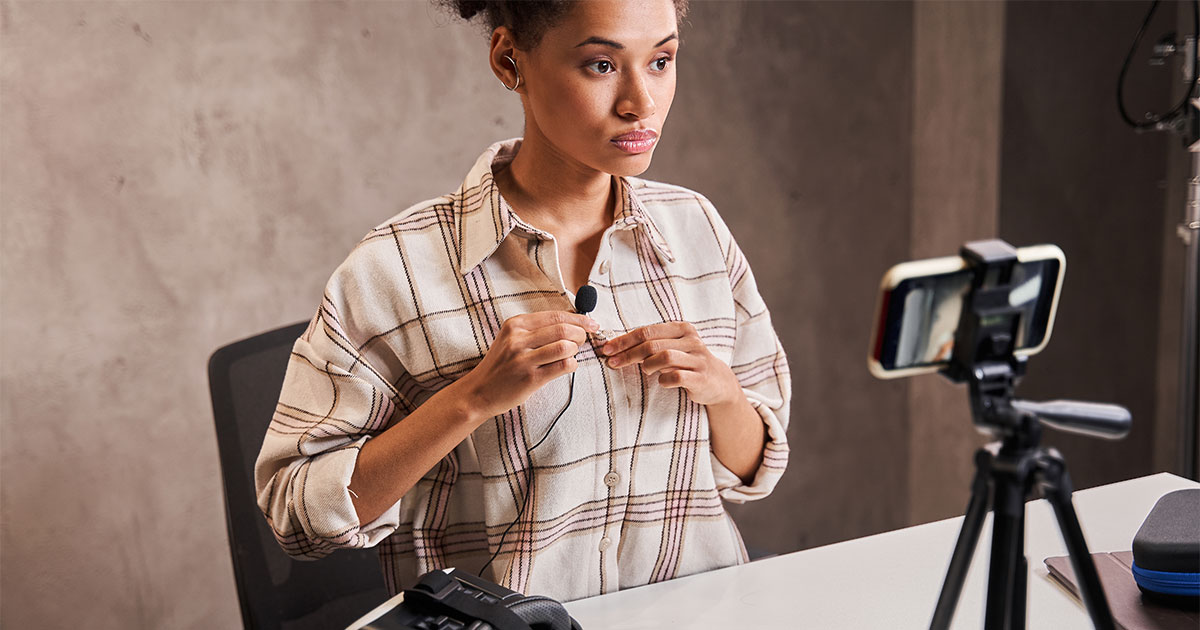
The spread of COVID-19 in early 2020 initiated a major shift in how people interacted with one another.
What once took place in person moved online, and for some the change was nice. Showing up virtually to work or school provided a getaway from the hassles of getting ready or commuting.
While the push to an almost all-virtual way of living may have provided some with a reprieve from the stresses of everyday life, for others it made life more difficult. The shift to virtual proceedings, specifically, turned what was – and is – a complicated experience into a near-impossible one.
This article provides an overview of the effects of the shift to virtual on those without reliable technology, the possible risks to due process rights, and recommendations for the future.
The Digital Divide
With COVID-19, virtual hearings became the new norm.
 Jessica Brown, Marquette University Law School Class of 2023, is a family law clerk at MacGillis Wiemer, LLC, in Milwaukee.
Jessica Brown, Marquette University Law School Class of 2023, is a family law clerk at MacGillis Wiemer, LLC, in Milwaukee.
On paper, it sounded like a great change. No more did attorneys and their clients have to drive from their offices, homes, or place of work to make an in-person hearing.
More importantly, clients did not have to take extra time off to drive to their hearing – they could just go to the nearest private area and attend from there.
But this is an idealized way of thinking about virtual hearings and fails to consider the “digital divide” that impacts many in this country.
The digital divide is “the gap between people who can easily use and access technology, and those who cannot,” and largely depends on one’s socioeconomic status, race and ethnicity, age, education, and disability status.1 Research shows that those affected most by the digital divide include the Black, Hispanic, and Native American communities, lower-income households, and those who live in more rural areas.2
Thus, when in-person hearings moved online, what seemed easier for some became a hassle for others. Attorneys quickly became aware of how remote proceedings were not possible for all clients, especially those who were not tech savvy or who had limited or no access to technology, and how those obstacles created more problems for clients.3
Risks to Substantive and Due Process Rights
As video hearings continue, more thought has been given to possible risks to clients’ due process rights.
The U.S. Supreme Court in
Mathews v. Eldridge emphasizes that “[t]he fundamental requirement of due process is the opportunity to be heard ‘at a meaningful time and in a meaningful manner.’”4 Yet, many virtual hearings have prevented clients from having that opportunity – or at least a meaningful one.
Technical issues caused by the various video-conferencing platform that courts use can delay proceedings, leaving less time for clients or their attorneys to be heard and litigate.5 These issues have also prevented clients from hearing the proceedings, hindering their ability to meaningfully participate.
For non-native English-speaking clients, technical issues that cause an overlap in speakers can prevent them from being able to understand what is happening in their own case.6 Even if the video-conferencing software runs as it should, a client may not have access to reliable technology, thus resulting in dropped audio or the inability to make a visual appearance. Assisting a non-tech-savvy litigant in working the software correctly can take time away from their hearing.
The move online has also affected attorneys’ ability to consult with and effectively represent their clients during hearings. Attorneys who represent children, for instance, have noticed that appearing in a virtual box can be dehumanizing for their clients.7 Removed entirely from one another, it is much harder to see the client – much less feel the emotion that is often present in an in-person proceeding.
Virtual hearings have also impacted attorneys’ abilities to quickly converse with their clients while the hearing is taking place.8 While attorneys may be able to request a breakout room, doing so takes much more time than leaning over and whispering in the client’s ear.
This lack of proximity has also made it more difficult for attorneys to de-escalate highly tense situations and control their clients’ behaviors, which may also cause a delay in the proceedings.9
Recommendations
While in-person hearings are returning, virtual hearings may remain an option. If possible, attorneys should make sure their clients can access reliable technology. Attorneys should also educate their clients on using the video-conferencing software that will be used in court.
Making sure the client knows how and when to unmute themselves and what to do if they lose connection will likely save time during the proceeding.
Above all else, attorneys, judges, and all in the courtroom should keep the digital divide in mind – that not all people have access to reliable technology or know how to use it. Thus, it is important to remain patient and allow the client time to have their meaningful opportunity to be heard.
This article was originally published on the State Bar of Wisconsin’s
Children & the Law Section Blog. Visit the State Bar
sections or the
Children & the Law Section webpages to learn more about the benefits of section membership.
Endnotes
1 Cynthia Sanders & Edward Scanlon, “The Digital Divide Is a Human Rights Issue: Advancing Social Inclusion Through Social Work Advocacy,”
Journal of Human Rights and Social Work, Vol. 6(2), 130-143, 131 (2021).
2
Id. at 133, 143.
3 National Juvenile Defender Center, “Due Process in the Time of Covid,” (2021).
4
Mathews v. Eldridge, 424 U.S. 319, 333, 96 S.Ct. 893, 902, 47 L.Ed.2d 18, quoting
Armstrong v. Manzo, 380 U.S. 545, 552, 85 U.S. 385, 394, 14 L.Ed.2d 62 (1985).
5 Leslie Birnbaum, “Due Process and Administrative Hearings in the Time of COVID-19: Help: I Need Somebody!” Journal of the National Association of Administrative Law Judiciary,” Vol. 41(1), 141-175, 154 (2021).
6
Id. at 161.
7 National Juvenile Defender Center,
supra note 3.
8
Id.
9
Id.
